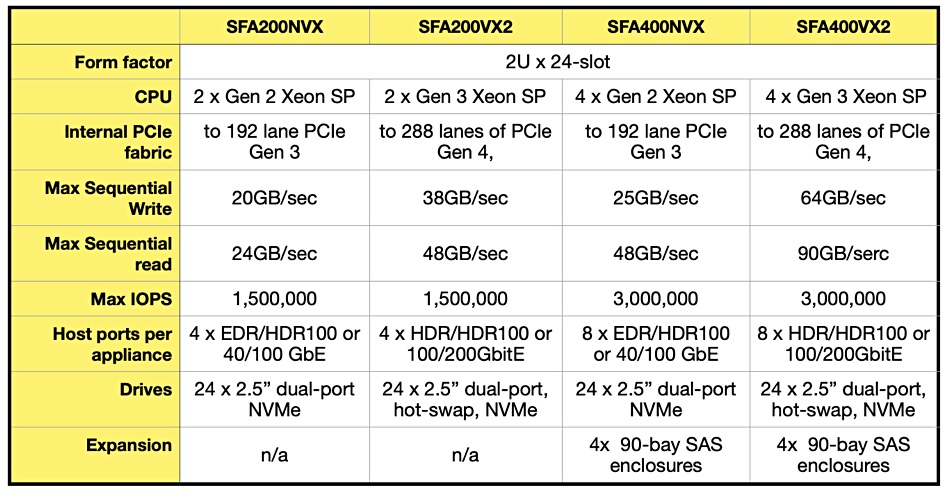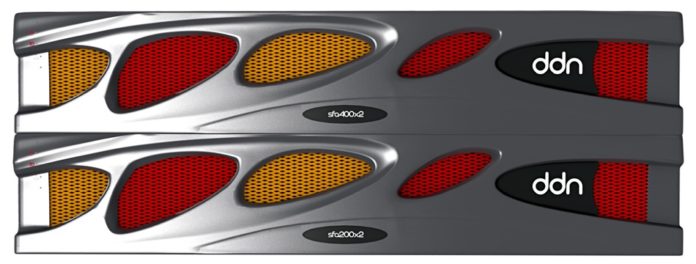DDN has accelerated its SFA200 and SFA400 NVX arrays by up to 156 per cent by adding more and faster PCIe lanes and upgrading the controllers to Gen-3 Xeon Scalable Processors.
These two block-access arrays share a common chassis (two rack units x 24 slots) which accepts 2.5-inch NVMe SSDs. Client access links have been upgraded as well, with faster base bandwidth. These systems are the foundation of DDN’s storage portfolio and are available as EXAScaler ES400NVX2 and ES200NVX2 scale-out, parallel file storage systems, as well as the recently announced AI400X2 appliances.

DDN says the new systems are designed to handle the modern data needs of AI applications, like natural language processing, financial analytics, and manufacturing automation, and production systems. In its view the new systems are needed to handle the ever-expanding amount of data these applications require, and to deliver the data fast enough for real-time processing and insight.
We have tabulated the old NVX2E and new VX2 systems using DDN datasheets to bring out the main improvements:

The sheer IOPS performance has not improved at all but the bandwidth has risen significantly, particularly with the old SFA400 putting out 25GB/sec when sequentially writing and its replacement rocketing along at 64GB/sec. There is vastly more internal PCIe bandwidth and speed with the new systems — up to 288 lanes of PCIe 4, versus 192 lanes of half-as-fast PCIe 3 in the replaced systems.
The new SFA400VX2 can be deployed in a hybrid (flash+disk) configuration and have 6.4PB of capacity in half a rack using DDN’s 90-bay drive enclosures. This uses 16 lanes x 4 ports (64 lanes) of SAS connectivity. The new systems can also have up to 64 PCIe lanes providing client connectivity.
The EXAScaler systems have so-called Hot Pools technology which optimises for both performance and low cost by transparently migrating data between flash and disk tiers.
Get a datasheet for the new systems from this DDN webpage.








